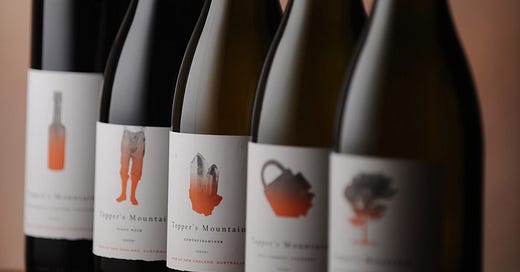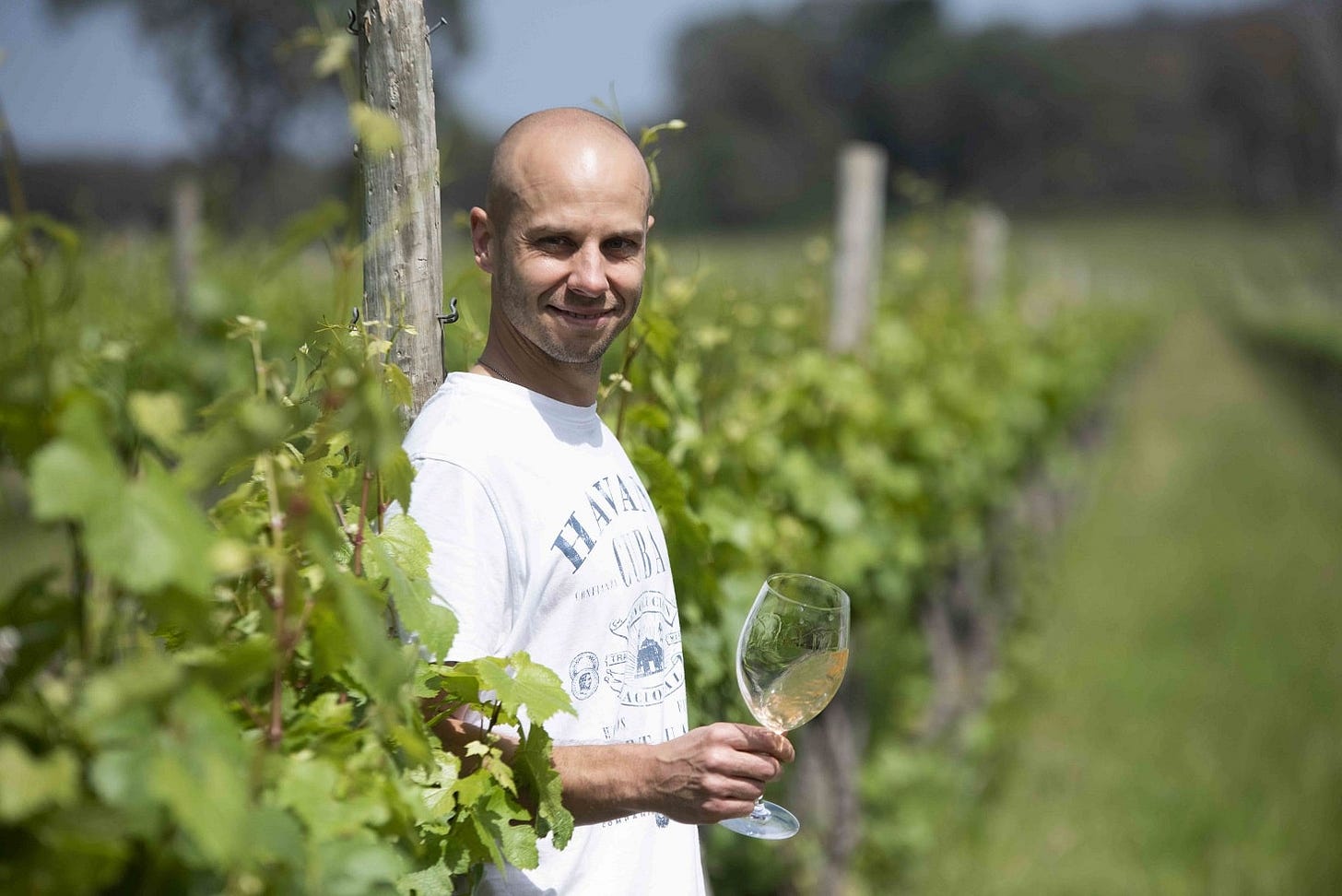Audio powered by Google Notebook LM
Nebbiolo. The name alone evokes mystic (or misty?) mornings in Piedmont, powerhouse reds with haunting aromatics, and wines built to outlive your best intentions to cellar them. But lately, a quiet transformation is taking place - not in Barolo or Barbaresco, but in Australia. And according to Jan Taborsky of Topper's Mountain (New England, New South Wales), it’s starting to get huge attention.
Let’s get one thing out of the way - the Aussies are not trying to mimic Barolo. They’re unlocking what Nebbiolo can become in a new landscape. And it turns out, that future is looking surprisingly bright.
🍷 A Grape That Demands Respect
Taborsky puts it plainly:
“Alongside Pinot Noir, Nebbiolo is one of the best red grapes in the world.”
It’s a bold statement, but one that reflects how seriously some Australian producers are taking this variety. And though Nebbiolo’s story in Australia is still young, there are signs that it’s beginning to find its feet - with dedicated winemakers driving the charge.
🌱 Still Early, But Evolving Fast
Compared to Pinot, which has had 30–40 years of experimentation across cooler New World regions, Nebbiolo is still an infant. Many vineyards were planted just over a decade ago, meaning we’re only now beginning to see what it’s capable of.
Jan Taborsky notes:
“It’s still too early to talk about ‘terroir-driven Nebbiolo’ in Australia. We’re still learning how to read it.”
The current styles reflect that. Many Australian examples lean into freshness, crunch, red fruit, and drinkability - far from the brooding, age-worthy archetypes of Serralunga or Monforte. But that doesn’t mean the work is shallow. On the contrary - some producers are taking a serious long view.
🍇 The Winemakers Leading the Way
While still a niche category, Nebbiolo is no longer a one-man show. A small but growing group of producers across Australia are working to unlock its potential - some by embracing the fruit’s elegance, others by chasing structure and longevity.
Here are nine producers worth watching:
Topper’s Mountain (New England, NSW) - Jan Taborsky’s high-altitude vineyard delivers savoury, structured, aromatically intense Nebbiolo with real nerve. Think tar, rose petal, and bright acidity - with no interest in ripeness for ripeness’ sake.
Fletcher Wines (Victoria, multiple sites) - Adam Foster trained in Barbaresco and brings a deep reverence for the grape. His Nebbiolo often shows a mix of Barbaresco elegance and cool-climate Victorian clarity.
Pizzini Wines (King Valley, VIC) - One of the earliest champions of Italian varieties in Australia. The Pizzini family have been experimenting with Nebbiolo since the 1980s and now craft several cuvées showing different expressions.
Luke Lambert (Yarra Valley, VIC) - Legend Luke Lambert works with high-altitude sites and produces Nebbiolo that leans floral, lifted, and accessible - a great entry point for curious drinkers.
Vinea Marson (Heathcote, VIC) - Mario Marson brings Italian heritage to Central Victoria. His Nebbiolo balances Old World savouriness with the warmth and spice of Heathcote.
Chalmers (Heathcote, VIC) - Known for their vine importation and clonal work, the Chalmers family are laying the foundation for Nebbiolo’s future in Australia through thoughtful site and clone selection.
Arrivo Wines (Adelaide Hills, SA) - Peter Godden, formerly of the AWRI, takes a research-driven but deeply passionate approach to Nebbiolo. His wines show great detail, structure, and staying power.
Longview Vineyard (Adelaide Hills, SA) - Their “Vista” Nebbiolo is a polished, aromatic take on the grape - one that reflects both terroir and stylistic clarity.
Unico Zelo (Riverland, SA) - Unico Zelo’s wines make Nebbiolo fun, vibrant, and drinkable - proving the grape doesn’t always need 15 years to shine.
📈 Consumer Momentum Is Driving the Category
Perhaps the most exciting part is that Nebbiolo isn’t just a winemaker’s grape anymore. Drinkers are paying attention.
Jan shares:
“It’s doing really well currently in Australia…very popular among drinkers, which I think is great.”
That popularity has created a feedback loop: more demand → more plantings → more experimentation → better wines. This is how categories grow - not through hype, but through consistent attention.
🧪 A Diversity of Styles - For Now
Right now, most Australian Nebbiolo is made in a fresher, more approachable style - not because it has to be, but because the vines are young and the terroir still being understood.
As Jan puts it:
“There’s no real reason to chase full Barolo structure yet…we’re still figuring it out.”
But among the crowd, a few are starting to build deeper, more age-worthy styles, influenced by traditional methods and extended maceration. These producers aren’t reinventing the wheel - they’re testing the blueprint. Hopefully, we’ll see this category grow exponentially in the next few vintages.
🔮 The Road Ahead
Australian Nebbiolo is not a trend. It’s a long game. Like the stock market, but with less volatility.
The diversity of climates - from Alpine Valleys to Heathcote to New England - offers a rich canvas. The producers are serious. The vines are maturing. And the consumers are coming along for the ride.
We’re not witnessing the birth of “New World Barolo.”
We’re witnessing the beginning of something different - and potentially just as thrilling.
Enjoyed this piece?
Coming soon: “Can Terroir Exist in a Young Wine Region?”
Subscribe to get it fresh from the press.
As always, thanks for reading - stay thirsty, stay curious. If you would like to further support me, you can follow me on Instagram or LinkedIN or tell your friends about this newsletter.
Aleksandar






